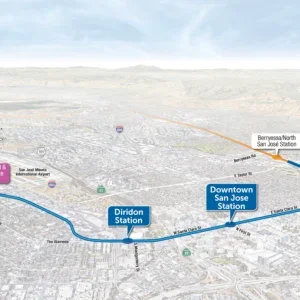Having originally been ordered for around €30m (US$36m) by the Spanish consortium which was to build the tunnel, and delivered in 2012, the machine was expected to start boring one of the Los Atlantes river tunnels which would form part of the SE 40 ring road around Seville.
However, partly due to the lingering Spanish financial crisis, the project stalled, leaving the 14m-diameter NFM-made machine mothballed in a warehouse at Coria del Rio, a small town near Seville.
Completing the SE 40 would have involved multiple drives under the Guadalquivir due to its various channels: one channel involved twin 2,180m-long, three-lane tunnel drives, while the other involved parallel 1,900m drives, totalling some 8km of tunnelling. The alignment comprised mainly sand, marl and gravel in a high water table and through a maximum five bars of working pressure.
According to Spain’s Euro Weekly, the stalled works have also resulted in two large lagoons which could constitute a potential health risk, particularly from mosquito larvae and the Nile Virus.
Coria del Rio’s mayor denounced the project and demanded accountability for the monies ‘wasted’. This came after the Ministry of Transport announced a tender for yet another study to decide whether tunnels are indeed the best option for the river crossings or whether a multiple-bridge alternative would be better.







